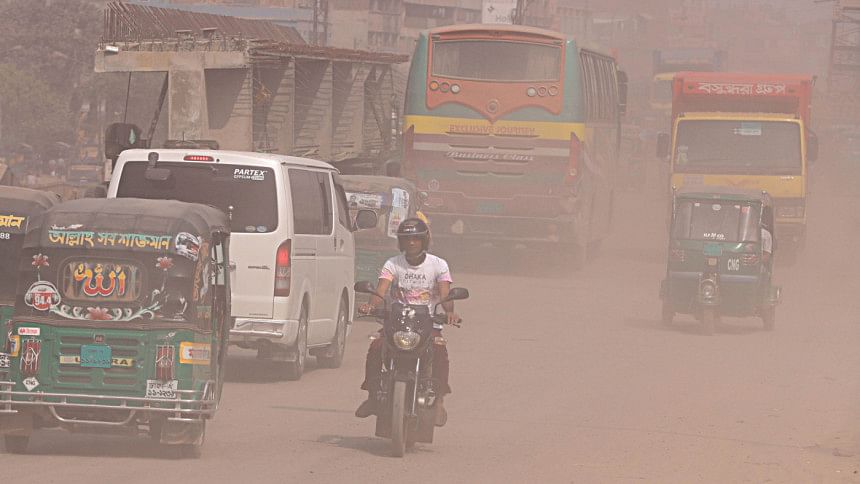Air pollution in Bangladesh: Life expectancy rate cut by 6.8yrs

Bangladesh, India, Nepal, and Pakistan are, in order, the top four most polluted countries in terms of annualised, population-weighted averages of fine particulate matter, a study showed yesterday.
It was detected by satellites and defined as particles with a diameter of 2.5 microns or less (PM2.5), according to a research by the Energy Policy Institute at the University of Chicago (EPIC).
Air pollution concentrations are then fed into the AQLI metric, which calculates their impact on life expectancy based on peer-reviewed methods.
Residents of Bangladesh, where the average PM2.5 levels were 74 micrograms per cubic meter, would gain 6.8 years of life if they were brought down to 5 micrograms per cubic meter as per WHO guidelines.
Globally, South Asia is the worst impacted region.
Among other South Asian countries, India's capital Delhi is "most polluted megacity in the world", with an annual average particulate pollution of 126.5 micrograms per cubic meter.
China, on the other hand, "has had remarkable progress in terms of its war on air pollution", which began in 2014, Christa Hasenkopf, director of air quality programs at EPIC, told AFP.
Its air pollution dropped by 42.3 percent between 2013 and 2021. If the improvements are sustained, the average Chinese citizen will be able to live 2.2 years longer.
According to the study, air pollution is more dangerous to the health of the average person on planet Earth than smoking or consuming alcohol, with the threat worsening in its global epicentre, South Asia, even as China rapidly improves.
Yet the level of funding set aside to confront the challenge is a fraction of the amount earmarked for fighting infectious diseases, the research said.
Its annual Air Quality Life Index (AQLI) report showed that fine particulate air pollution -- which comes from vehicle and industrial emissions, wildfires, and more -- remains the "greatest external threat to public health".
If the world were to permanently reduce these pollutants to meet the World Health Organization's guideline limit, the average person would add 2.3 years to his or her life expectancy, according to the data collected till 2021.
Fine particulate matter is linked to lung disease, heart disease, strokes, and cancer.
Tobacco use, by comparison, reduces global life expectancy by 2.2 years, while child and maternal malnutrition is responsible for a reduction of 1.6 years.
Asia and Africa bear the greatest burden yet have some of the weakest infrastructure to deliver citizens timely, accurate data. They also receive tiny slices of an already small global philanthropic pie.
For example, the entire continent of Africa receives less than $300,000 to tackle air pollution.
"There is a profound disconnect between where air pollution is the worst and where we, collectively and globally, are deploying resources to fix the problem," said Hasenkopf.
While there is an international financing partnership called the Global Fund that disburses $4 billion annually for HIV/AIDS, malaria, and tuberculosis, there is no equivalent for air pollution.
"Yet, air pollution shaves off more years from the average person's life in the DRC [Democratic Republic of Congo] and Cameroon than HIV/AIDS, malaria, and other health threats," the report said.

 For all latest news, follow The Daily Star's Google News channel.
For all latest news, follow The Daily Star's Google News channel. 



Comments